Senbeijiru is a local dish made by simmering Nambu senbei crackers in a broth made from meat, fish, mushrooms, and vegetables. Starting with Hachinohe City in Aomori Prefecture, it is often made in the southern region of the prefecture. This is a perfect dish for winter as a soup that warms your body on cold days. Let us find out the recipe to make this Senbei jiru!
What is Senbei jiru?
Senbei-jiru (せんべい汁) is a traditional Japanese dish from Aomori prefecture in the Nanbu region. Nanbu senbei are flour and salt crackers produced from wheat flour. Senbei-jiru, also known as wheat-flour wafer soup, is a chicken, vegetable, and mushroom stew with locally manufactured wafers called nanbu-senbei. Locals commonly use soy sauce to season the soup, however, miso can also be utilized. The flour, salt, and baking soda-based baked nanbu-senbei have a distinct texture that does not dissolve easily. These senbei are white and have little flavor, but they absorb the flavorful soup water while remaining firm.
Normally, locals uses Nanbu senbei but a special kind of Nanbu senbei is used for senbei jiru. They call it “Kayaki senbei” (rice crackers for soup and hot pot) which are baked exclusively. Generally, the ingredients such as burdock, mushroom, green onion, etc., are boiled in soy sauce base (there are also miso and salt base) broth of chicken and pork. Rice crackers made from soup stock have a texture that makes them chewier.
Etymology

The name “senbei jiru” literally means “rice cracker soup” in Japanese, with the word “senbei (煎餅)” meaning rice cracker, and “shiru (汁)” or “jiru” meaning soup. While the name of the dish might be too literal, at the same time, it also gives us a hint of what the special ingredient of this soup is: a special type of senbei cracker that is an all-time favorite among Aomori Prefecture’s residents, known as the nanbu senbei.
Senbei Jiru History

In the late Edo period, wheat and soba were grown in the south, including Hachinohe City and the surrounding area, where they could not eat rice due to famine and poor harvests. Soft wheat crackers and soba crackers were made from wheat and buckwheat flour, and hard-baked southern crackers were born in the Meiji period. Locals had ate the Nambu Senbei as a staple or snack, but they also ate it by putting it into soup. This is the beginning of “Senbei Jiru”.
Japanese first cooked Senbei in the hearths of each household when Nambu senbei was born, but as demand grew, senbei-yaki molds were mass-produced at steelworks. Because of the invention of the baking mold, Nambu senbei became popular.
Senbei jiru Recipe

Senbei jiru Ingredients
| Ingredients of Senbei jiru for 4 persons | |
| Chicken thigh | 200g |
| Carrots | 40g |
| Burdock | 125g |
| Maitake mushroom | 150g |
| Cabbage | 100g |
| Leek | 35g |
| White rice cracker | 150g |
| water | 800g |
| rapeseed oil | 14g |
| Cooking liquor | 100g |
| Niboshi soup stock | 200g |
| soy sauce | 25g |
| salt | 10g |
How to make Senbei Jiru
Firstly, make the carrots and burdock into bamboo grass. Next, cut the shirataki noodles to a width of about 3 cm. You can just drop the mushrooms in the soup. Then, cut the chicken thigh into pieces about 1.5 cm wide.
Fry the carrots, burdock roots, shirataki noodles, maitake mushrooms and chicken thighs in canola oil over high heat. When cooked, add water and simmer over high heat. After removing the lye, add the dried sardines, boil and then add the cooking liquor.
After boiling, add soy sauce (colored) and salt, add cabbage and rice crackers divided into about 1/4, and simmer over medium heat.
When it boils, turn off the heat. Add the chopped green onions and simmer over low heat. When the green onions cooked, it is complete.
Types of Nambu Senbei

In the Hachinohe region, Nambu senbei is an indispensable snack for homes and commonly eaten. At department stores and supermarkets in the city, Nambu senbei comes in various types.
White rice cracker

The simplest senbei made by baking dough mixed with flour and salt. The direct taste of wheat is more like bread than rice crackers.
Sesame rice cracker

The senbei with an adult taste that contains plenty of fragrant sesame seeds. The bitterness of sesame has become a habit, and many Hachinohe citizens have it at home.
Bean rice crackers

Nambu senbei baked with peanuts in the dough. The peanuts are slightly sweet and have a gentle taste that is perfect for a snack.
Sesame rice crackers

A rice cracker with sweet sesame paste on the back. An elegant taste with the taste of Japanese sweets, just like sesame dumplings.
Squid rice cracker

Nambu senbei with plenty of saki squid. It’s perfect as a snack for sake. A rice cracker that embodies Hachinohe in a sense, combining Hachinohe’s famous squid and Nambu senbei.
Cookie rice crackers

Senbei made by baking sweet cookie dough in the shape of Nambu senbei. The thick dough has a unique texture.
Ame Senbei

Nambu senbei sandwiched between starch syrup. A nostalgic taste that reproduces the old-fashioned topping of starch syrup plus Nambu senbei.
What does Senbei Jiru taste like?

The flavor of dashi seeps into the rice crackers. Nambu Senbei itself is originally a tasteless taste. In other words, locals boiled the senbei where the stock of the ingredients, such as meat, fish, and vegetables, seeps the flavor in. The unique texture of boiled rice crackers is amazing. The senbei boiled in seasoning has a unique crunchy texture. If it’s pasta, it’s called al dente. If you don’t boil it properly, you won’t be able to enjoy the original texture, either too hard or too soft.
What are the common seasonings of Senbei Jiru?

There are three typical seasonings: chicken or soy sauce, fish or salt, and horse meat or miso. The most popular combination is “chicken or soy sauce flavor”. It is common to add vegetables, mushrooms, thread konnyaku, etc., and sprinkle with green onions. Sometimes duck or pork is used instead of chicken. “Fish and salty taste” is a combination like Hachinohe that is rich in seafood. Some locals also added river fish such as dace, canned mackerel, white kinkin, cod, and grilled mackerel.
Where to buy Senbei Jiru
Minato Shokudo (みなと食堂)

You can enjoy Hachinohe Senbei-ji soup with fresh seafood. There is also a set of the popular flatfish pickled rice bowl and senbei soup, so it is perfect for those who want to enjoy Aomori gourmet. The soup with plenty of soup stock such as vegetables and mushrooms contains chewy rice crackers. This shop where you can enjoy the nutritious and warming senbei soup and the seafood of Hachinohe together.
Hasshoku Market Sushi (八食市場寿司)

You can also feel free to taste Hachinohe senbei soup at the conveyor belt sushi restaurant in the Hasshoku Center market in Hachinohe. At a reasonable price because it is directly connected to the market, there is the luxury of being able to taste the fresh fish caught at Hachinohe Port while also enjoying the local cuisine of Senbei-ji.
Ichibatei (いちば亭)

This is also a shop inside the Hasshoku Center. You can eat not only Hachinohe Senbei-ji soup but also seafood bowls and meals made with local seasonal ingredients. Senbei soup is plentiful even if it is a single item.
Yakudake (屋久岳(八食センター)

At “Hashoku Center”, you can easily eat senbei soup at “Yakudake”. Specializing in take-out, it is a style that you can have at the chairs and tables prepared at Hasshoku Center. Their Nambu senbei, which they are particular about the timing of putting the ingredients in, does not become too clunky and has moderate elasticity. The soup stock has a nice and gentle taste.
Takeaway
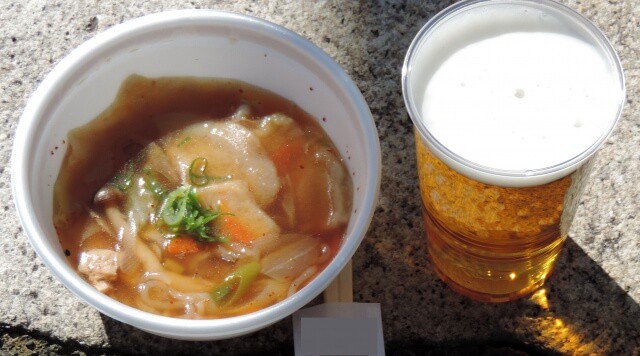
Regional foods like senbei jiru aren’t generally served at the local Japanese restaurant, but they’re nevertheless noteworthy — especially because they represent what distinguishes particular areas and cities in Japan from the rest of the country. Hachinohe Senbei-jiru the Japanese handed down as a home-cooked dish. The feeling of thinking about the family of mom and grandma is at the root of it. The people at the restaurant also cherish the spirit of local cuisine, and the ingredients for rice crackers and ingredients are full of love. Therefore, the dish will warm your body and soul.
If you are looking for more of Aomori prefecture‘s specialties, you can try their very special – Ichigoni, Aomori Miso Curry Milk Ramen, and Towasa Barayaki.

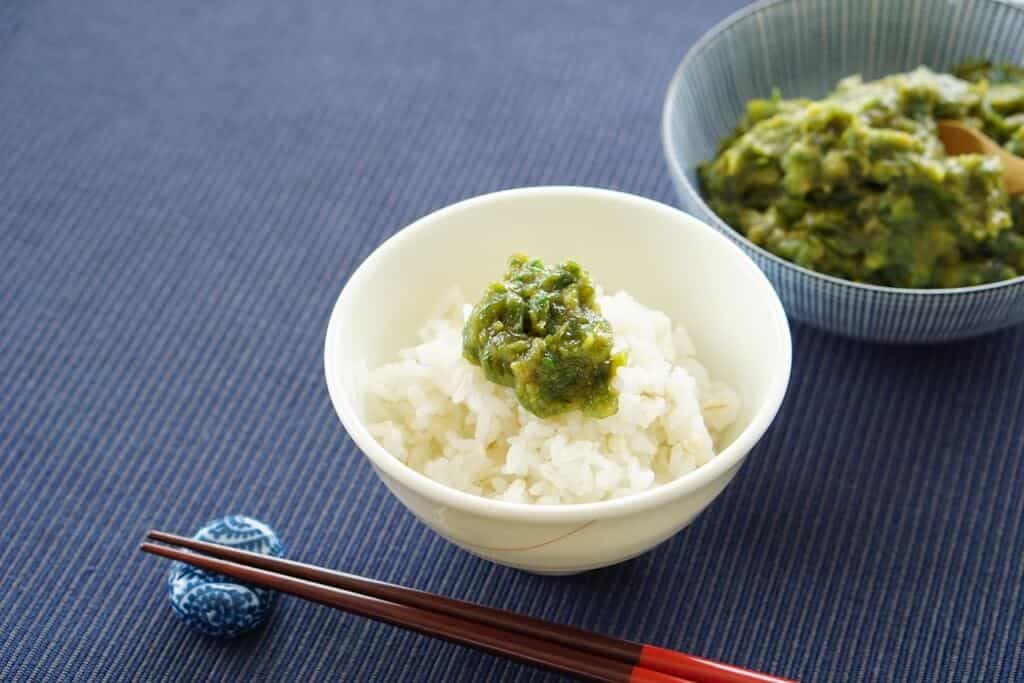




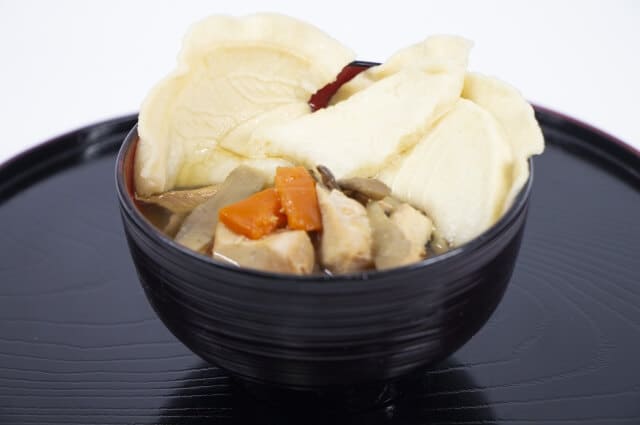
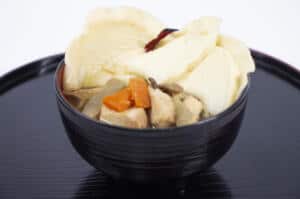


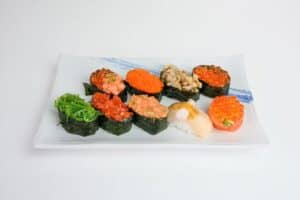





Comments